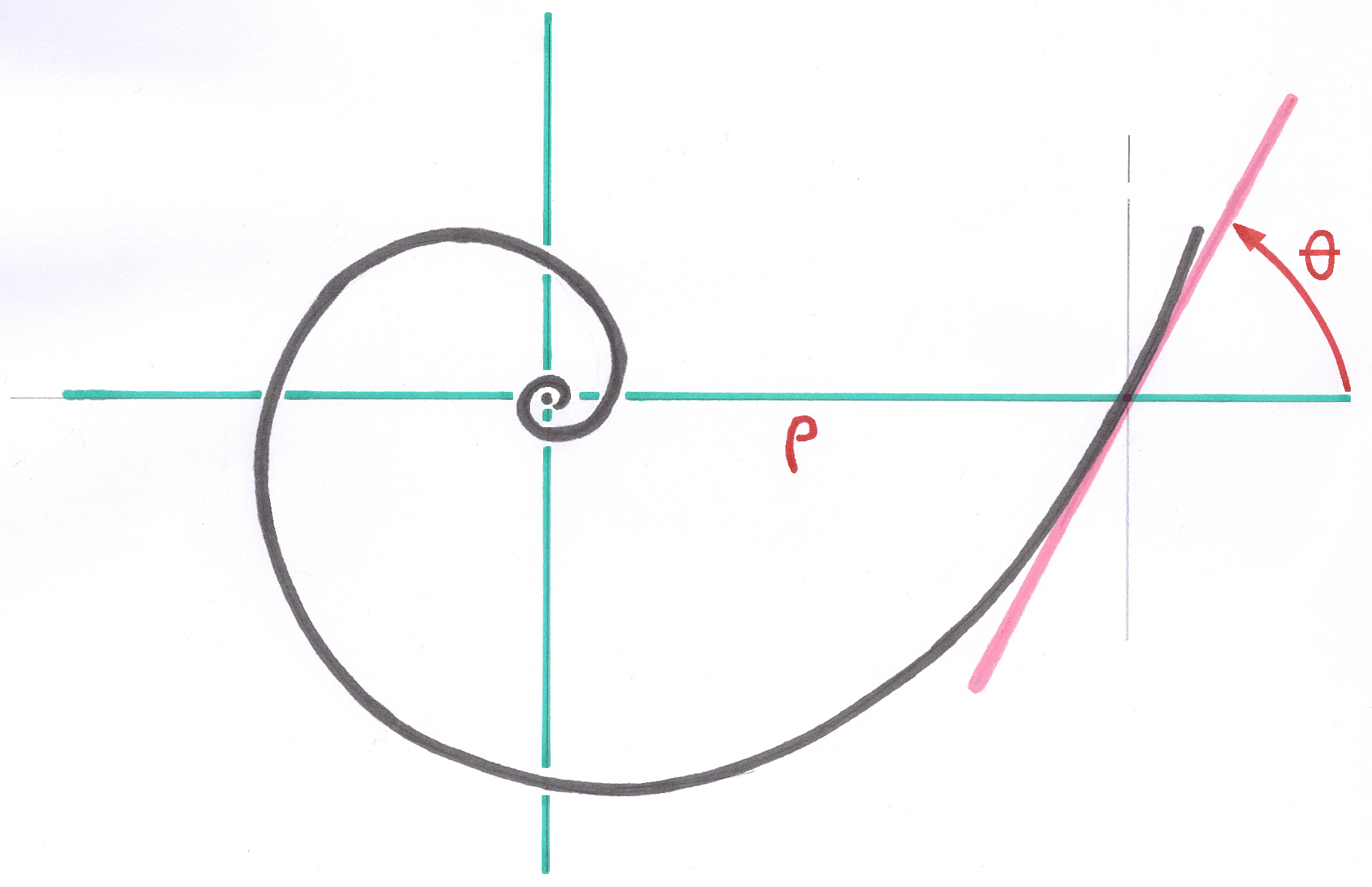5.1.2. Stems SL Plus
5.1.2.1. Why still improve the AlloClassic stems?
In 1991 the demand was made to me develop a new cementles rectilinear stem improving the performances of the AlloClassic stem which I had calculated in 1984.
It was imperative to preserve the surgical technique of Professor Karl Zweymüller already practiced by hundreds of users.
Stem SL Plus results from integration of the improvements conceived during the seven years separating these two generations from prosthesis.
I was to preserve the continuity and the philosophy of the AlloClassic system which I had calculated in 1984. Already the AlloClassic stem entirely “was formulated” mathematically and was calculated by computer, and not “drawn” using a graphic software.
To allow notable improvements, it was necessary to me to entirely redesign the software having been used for calculation of the AlloClassic series. From 1986, I rewrote all the programs with a new data-processing language under a new operating system on new computers.

In this version SL Plus, all the straight lines of the geometry of the AlloClassic series were removed. The new form is consisted of curved mathematical functions in three dimensions with an aim of still improving Primary Stability, the Distribution of the Constraints and of aiming at the suppression of the femoral pains.
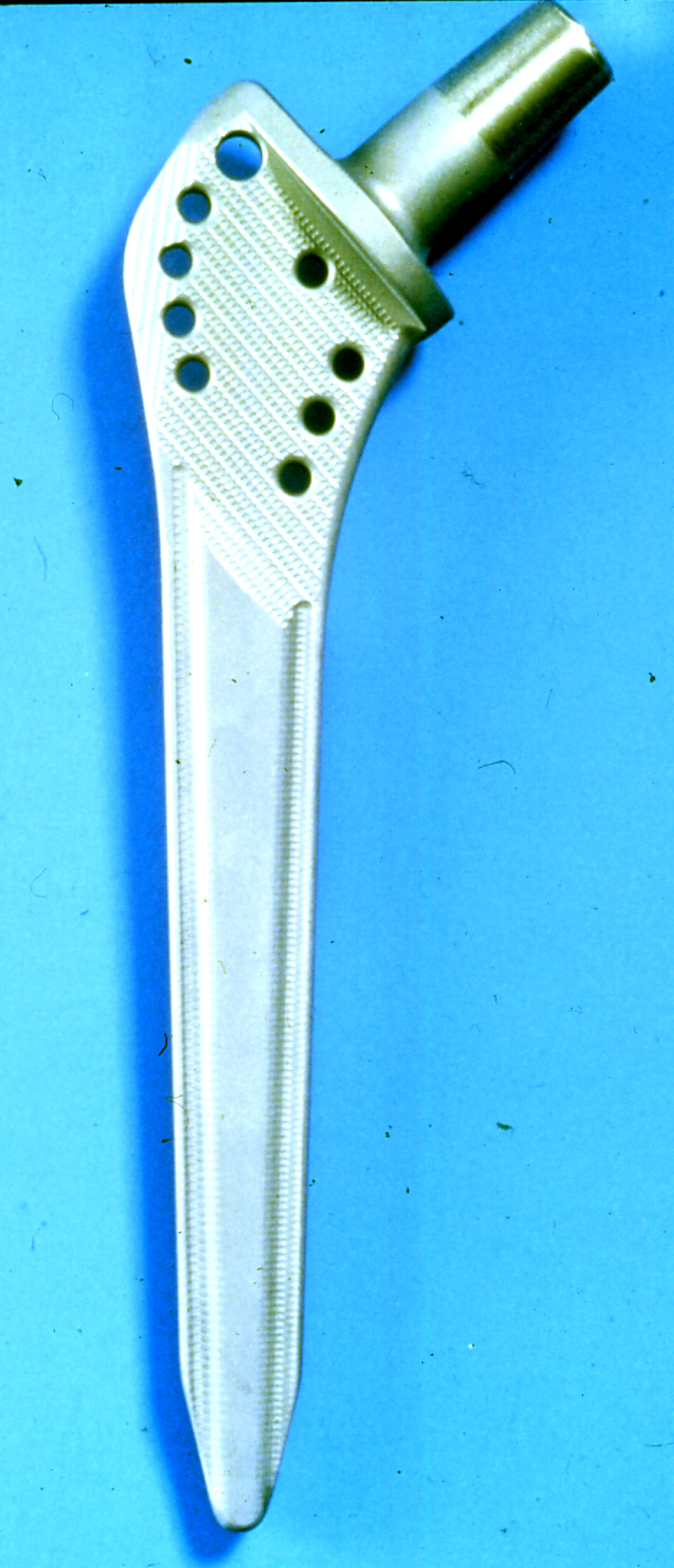
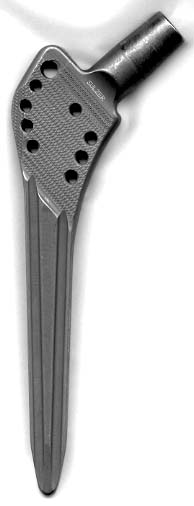
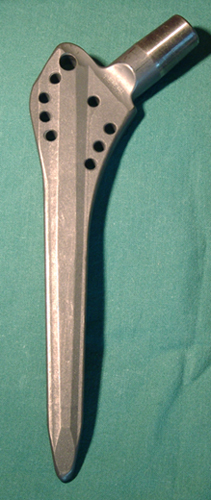
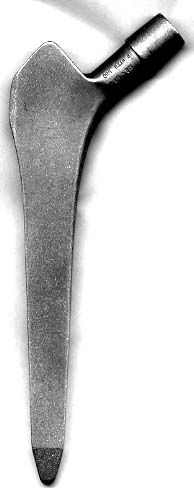
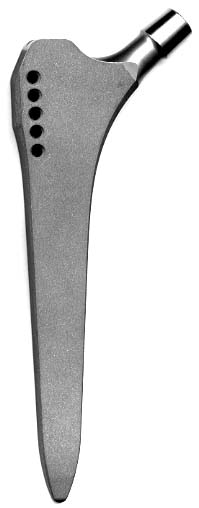
What improvements?
5.1.2.2. New balance of the fixation
In stem SL Plus, the improvement of the primary proximal Stability is obtained.
The distribution of the fixation of this new stem SL Plus satisfied not only the defenders of distal fixation but also those which attach importance to proximale fixation.
The orthopedists recognize now that dominating distal fixing let remain some problems, but that exclusively proximal fixation caused a high rate of reoperations.
None the modifications which I brought to obtain this increase in the ratio proximal fixing / distal fixing, deteriorates the continuity of the AlloClassic system universally recognized.
The AlloClassic implants deviated a bit early from osseous bed in the area from the calcar. I obtained the improvement of the proximal behavior primarily by a new mathematical formulation of the medial shape of the implant, i.e. by a new curve of the calcar.
The trochanteric wing, important in the Zweymüller system, takes part in this proximal stability and the angles and the effects of compression of the facets which compose it were carefully reconsidered. All the facets respect now the Law of Positive Derivates. In the direction of the greater trochanter, the implant has a greater surface area.
5.1.2.3. Reduction in the femoral pains
My objective was to still reduce the rare residual femoral pains of the AlloClassic series which however disappeared after a few weeks.
The shape of new stem SL Plus, is entirely composed of functional curves allowing a controlled distribution of the forces and not of straight lines as in my preceding series AlloClassic. That gets a very progressive decompression of cortical in the vicinity of the distal point. The transition from the prothesed diaphyse to the empty diaphyse is soft.
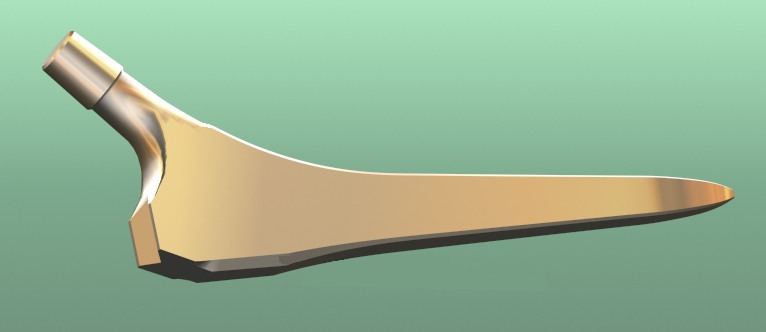
Painful cortical thickenings due to the too discontinuous distributions of the constraints, accepted 20 years ago, must become the exception. Personally, I think that the femoral pains caused by the prostheses come from bad distributions of the constraints, and even of real macromovements of the implant in the bone.
5.1.2.4. Analyzis of the causes of depression of the Zweymüller stems first génération
It was known that stems of first generation (1979-1985), (with creation of which I did not take part), sank frequently 1cm and sometimes more during the postoperative weeks, which was regarded at the time as acceptable and not catastrophic.
5.1.2.4 .1. Discussion on the depression after insuffisant preparation
Let us study the case of a depression of 10 mm from a stem without cement, to which the angulation is close to 6 degrees. This angle corresponds to a tangent from approximately 0.1. , therefore a diametrical widening of 1 mm corresponds to a depression of 10 mm.
If a stem sinks by 10 mm this means that the diameter of the bone bed around the stem, after loading, has widened too easily by approximately 1 mm, therefore that the preparation by the rasp was insufficient and should have been 1 mm wider so that more surface area in mm2 of cortical bone was ground.
This femur should have been prepared with more insistence to allow the implantation of a stem of the larger size.
Application to the exact values of stem SL Plus: I specify the elements of the preceding discussion connecting widening and the depression: The principal angle of stem SL Plus, angle between two diagonally opposed edges, in contact with the cone locally exinscrit, calculated in the middle of the stem because it is not constant, is of 5.679 degrees. This angle is different from the angle of face of the contour, which is of 5.501 degrees. The antéro-posterior angle is of 1.93 degree in the middle of the stem.
5.1.2.4 .2. Discussion on the depression after blocking on contracting in distal
In the cases which I observed, several stems Zweymüller first generation (1979-1985) were blocked prematurely on the shoulders located at the distal end of the zone of anchoring, left by an insufficient distal preparation of the osseous bed by a rasp of length equal to the length of the stem.
In close to a case on ten, the stem Zweymüller first generation, prematurely blocked, could swivel around the shoulders of the distal pyramid and cause very important pains.
To avoid leaving osseous shoulders to the point of the stem after rasping, the rasp must be slightly longer than the corresponding stem. It is this longer preparation than I call Impaction Reserve.
In certain cases, because of local excess of constraints in the vicinity of these shoulders of pyramid, the bone could resorb and the stem could reach a new position notably lower, the depression could stop and the osteointegration could start and be established. Centimetric depressions were still acceptable.
In other cases, the movement around these shoulders of pyramid caused so severe pains that reoperations were necessary.
In France, several users of first generation Zweymüller prostheses have had to give up implanting them because of the pain caused, on the one hand by the shape of the stem, on the other hand by the lack of impaction reserve or reposition reserve.
With the SL Plus stems recalculated in 1992, centimeter indentations became rare because I took into account, when designing the rasps, the Impact Reserve, and the distal contour in the vicinity of the tip.
This distal contour that I call Distal Ogive is a progressive symmetrical curvature and no longer a distal pyramid with fairly abrupt shoulders.
5.1.2.5. The principle of Ascending Interlocking in the SL PLus stem
Ascending Interlocking (4.7.2.) makes it possible to evaluate in advance the number of millimeters by which the center of the head rises when replacing a size (trial prosthesis during implantation) by the size immediately superior in the same bone bed correctly prepared to obtain the ideal Total Bone Length.

Knowing the intervals makes it possible to show that it is perfectly possible not to use heads with extra long necks XL or XXL which are skirted heads and to preferably implant the following stem size, which provides more security in regarding the implantation, and more amplitude of movement, which reduces the risk of dislocation. The test should begin with a short neck test head.
5.1.2.6. Technical details on the SL Plus stem improvements
Thanks to the development of my so-called Calcar-Polynomial-Deckner method (4.1.2.), I was able to address and solve most of the remaining problems of the previous AlloClassic shaft. In the Implant Descriptor system, the parameters of each function that make up the Calcar polynomial can be adjusted independently without having to re-parameterize the other functions.
The shape of the previous AlloClassic corresponded exactly to the Basic Pyramid Shape transformed only by the method of Thickness Corrections (4.8.2.). The four longitudinal edges of the anchor zone were strictly straight segments and the medial, lateral, anterior and posterior faces were strictly planar.
It is this previous geometry, which I now consider to be rather primitive, that I nevertheless took again with slightly different dimensions and angulations to constitute the Pyramidal Base Shape of the SL Plus stems.
The rectilinear part of the Base Form constitutes in the SL-Plus stems, the first term (a line of the form Y = a X, therefore of power 1) of the Calcar Polynomial.
These are the following terms of the Calcar-Polynomial all containing exponential and logarithmic functions, with Real powers (not integers), which define the functional complements added to the Base Form.
The parameters of the following terms make it possible to position and shift, along the axis, the zone where the fixation will be preponderant (4.4.2.), then the zone, defined by the Separation Function (4.5 .2.), where the stresses in the bone must very gradually decrease.
The entire Calcar-Polynôme-Deckner defines the complete medial contour of the shaft, all the way to the tip. This medial contour no longer includes a rectilinear zone at all despite the straightness apparent to the naked eye.
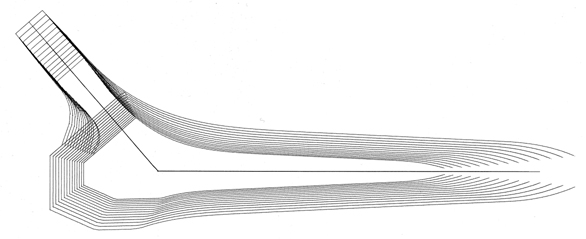

All the terms of the Calcar-Polynomial are applied symmetrically to define the lateral contour of the stem. This lateral contour is modified, in the proximal part, by the intersection with the function of the trochanteric wing which is constituted by a straight line whose slope respects the Law of Positive Derivatives, therefore the Principle of Extractibility.
This was not the case for the AlloClassic stem whose trochanteric fin was inclined in a direction that I no longer approve of because the Law of Positive Derivatives was not respected in this area.
The trochanteric fin of the SL Plus stem participates, including with its 45° chamfers, in the conical junction of the implant in the bone, although at this location a large part of the contacts take place in spongy bone.
The anterior and posterior surfaces of the SL Plus stem are no longer strictly planar since they are composed of the planar surfaces of the Pyramidal Base Shape to which a fraction of the exponential curves coming from the Calcar-Polynomial are added.
Excluding the Arc of the Calcar itself, the entire Calcar-Polynomial defines the anterior and posterior contours in proportion to the Form Factor of the cross section of the rod at each level of the cut. This Form Factor varies regularly following the application of the Thickness Corrections method.
5.1.2.7. The chamfers of the SL Plus stem
Unlike the approximately 1mm roundings of the AlloClassic stem, the chamfers of the SL-Plus stem are defined precisely by the program. At each cutting level, the width of the chamfer, at an angle of 45°, is calculated as a percentage of the thickness of the stem at that level. These chamfers are made precisely by digital milling during production.
Thanks to this, the chamfers are an integral part of the conical junction system facing the bone.
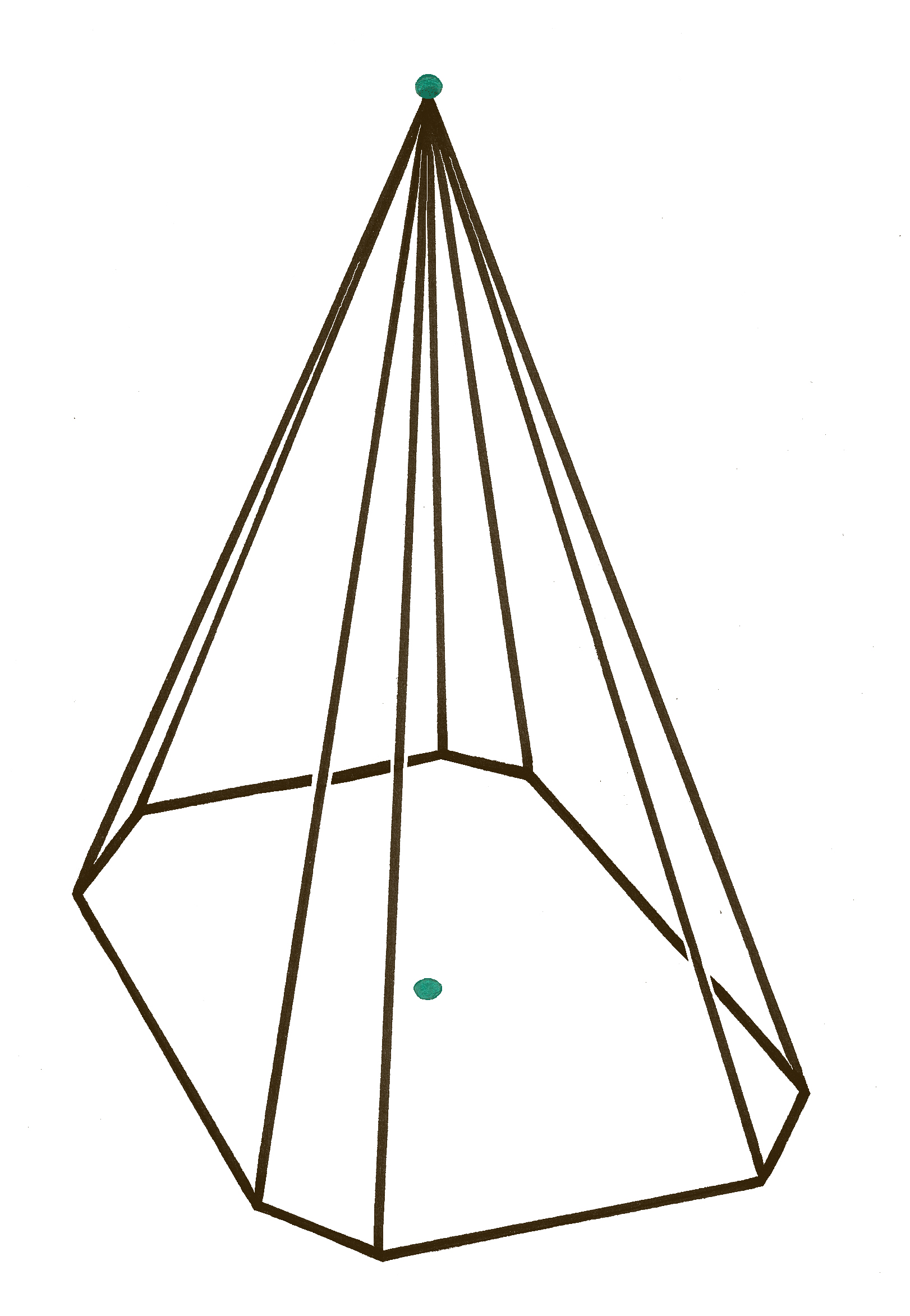
These chamfers are a precise element of Ascending Interlocking because the widths of the chamfers compared to the levels where two consecutive sizes have the same section, are in rigorous correspondence.
5.1.2.8. Discussion
The preceding developments, while simplified to a large extent, explain the excellent clinical results of this stem which are due to the numerous theoretical and mathematical refinements which have been applied to it whereas, observed with the naked eye, its bare appearance appears of great simplicity, like a flat metal object.
This apparent simplicity has led various manufacturers, such as Wright Medical, in its document on the ProfemurZ series, to think that the SL Plus stem had undergone only "slight modifications" compared to the AlloClassic stem while eight years of research, collection of experience during surgical assistance, modeling and programming, were necessary for me to create this SL Plus series.
The term "Dual Taper", which I have never used, implies that the SL Plus stem was defined simply by independent medial-lateral and antero-posterior angles. In reality, the faces of the SL Plus stem are not flat, do not present constant angles at any level, and it was not necessary for me to define these angles which are the consequence of the multiple curves describing the stem. The variation in these angles is more easily visible to the naked eye on the SLR-Plus and Holz-Zacher rods.
It is this mass of work, carried out alone, without external technological input, which allowed the Plus Endoprothetik group to reach a global dimension at lightning speed at the time. This is also why I consider myself the “technical founder” of this group.
----
Next stems: stems reoperation slr plus
Patent concerned: Brevet Tige SL Plus
